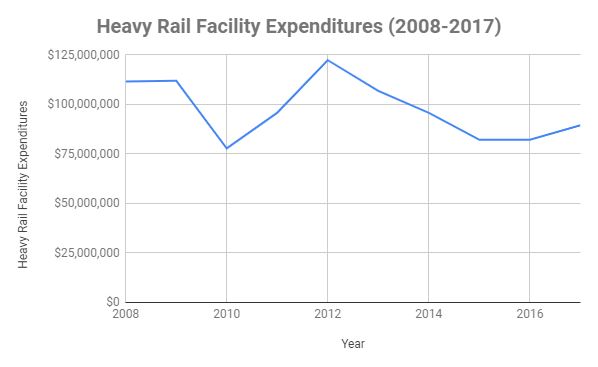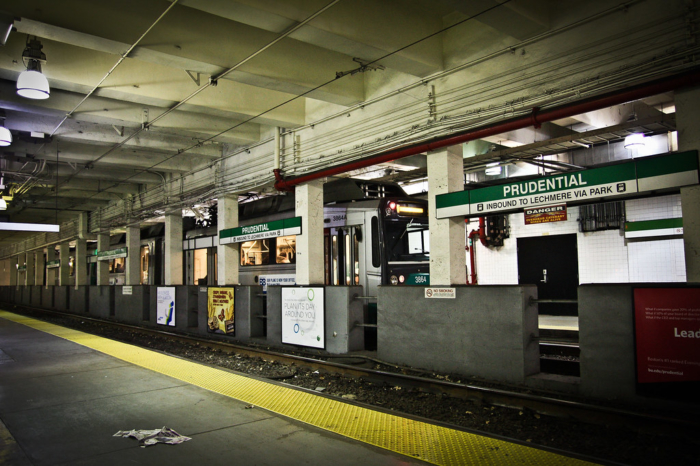MBTA Facilities in Desperate Need of Spending Increase
A number of MBTA facilities have deteriorated in recent years. As a result, many commuters are left to navigate stations with crumbling steps, limited access for the disabled, broken elevators, and leaking ceilings. The condition of these facilities is not surprising, given the T’s lack of spending compared to peer transportation systems.
A 2018 report published by the MBTA rated the agency’s stations and parking facilities on a scale of 1 to 5. The report found that nearly 60 percent of the MBTA’s 378 stations and parking facilities scored 2 or less, meaning they need significant repairs. Seventy eight of those properties had a rating of 1. To make matters worse, some of the worst-rated stations include major hubs such as South Station, Back Bay Station, and the JFK/UMass stop. Further, 11 of the 20 stations along the Orange Line and nine of 22 Red Line stations had a 1 rating.
While facility spending has been increasing in recent years according to Pioneer Institute’s MBTAAnalysis.com, it is still not nearly enough given the T’s ridership. When compared with its peer transportation systems the MBTA ranked tenth in facility spending from 2008-2017. Meanwhile, it had the fifth-highest ridership of its peer systems. High ridership combined with comparatively low facility spending has led to the crumbling of the facilities commuters rely on to access public transportation.
Further, the MBTA’s report found that the Red Line and Orange Line had particularly poor ratings, as MBTA heavy rail facility spending is inadequate. While the T’s heavy rail system was the fourth largest U.S. transportation system from 2008-2017 in terms of ridership, it ranked ninth in total facility expenditures during that period. Moreover, heavy rail facility spending decreased by 12.1% between 2008-2012 and 2013-2017, while ridership increased 13.7% during that period.

Even with the MBTA projecting $8 billion in capital spending over the next five years, it is imperative that facility spending not be overlooked. While there are also many plans to improve T stations, including the $9 million added in the final fiscal year 2020 budget toward station cleaning, it’s important to remember that the impact of system infrastructure improvements will be minimized if the facilities commuters pass through each day continue to crumble.
Harris Foulkes is a Roger Perry Transparency Intern at Pioneer Institute and a rising sophomore at Amherst College studying Economics.



